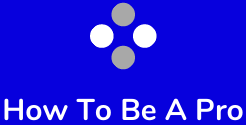Understanding the Power of Cold Calling in Appointment Setting
Cold calling remains one of the most powerful yet underestimated tools in modern sales. Despite the rise of digital marketing, social selling, and automated email outreach, nothing matches the direct connection created by a real-time conversation. Cold calling allows sales professionals to build rapport quickly, understand client needs, and influence decisions with empathy and strategy. Many businesses that excel in generating qualified leads still rely heavily on this traditional method, especially when supported by well-designed appointment setting training.
The biggest reason cold calling thrives is that it humanizes the sales process. Rather than waiting for a potential lead to stumble upon a website, trained callers take the initiative to reach out, making the first impression personal and professional. Moreover, prospects appreciate authentic interactions, especially when approached by someone confident, knowledgeable, and respectful of their time. Cold calling appointment setting training ensures that callers not only sound professional but also understand when and how to ask for appointments without sounding pushy or rehearsed.
The Foundation of Effective Cold Calling Appointment Setting Training
A structured training program is the foundation of every successful appointment setting campaign. Without proper guidance, even the most enthusiastic sales representatives can become inconsistent or lose motivation. Cold calling appointment setting training focuses on transforming uncertainty into skill and confidence. It teaches salespeople to communicate with clarity, build trust quickly, and maintain professionalism even when facing rejection.
An effective training framework includes essential communication techniques such as tone control, pacing, and active listening. These elements allow the caller to adapt naturally to the flow of each conversation. The training also covers objection handling—a critical skill in keeping the dialogue alive when prospects hesitate. When trainees master these fundamentals, they gain resilience and the ability to stay motivated even after multiple rejections. Ultimately, the right training empowers teams to turn every cold call into a warm opportunity.
Key Skills Every Appointment Setter Should Master
To excel in cold calling, appointment setters must develop several core competencies. The first is persuasive communication—knowing how to speak with authority and warmth without overwhelming the prospect. The second is research: understanding the potential client’s background before calling ensures relevance and personalization. This preparation transforms a generic sales pitch into a meaningful discussion about the client’s needs.
A few critical skills that every appointment setter must cultivate include:
- Crafting flexible scripts that sound natural and conversational
- Using empathy to connect with diverse personalities
- Asking open-ended questions that uncover needs and pain points
- Listening actively rather than rushing to close
- Handling objections confidently and without defensiveness
When these skills are mastered, the appointment setter becomes more than a salesperson—they become a trusted professional who genuinely understands client goals. The ability to combine empathy, strategy, and confidence separates top performers from average ones in this competitive field.
Step-by-Step Framework of an Effective Cold Calling Training Program
A high-impact cold calling appointment setting training program follows a clear, strategic framework designed to build skill and confidence systematically. The first step is assessment—identifying the individual’s strengths, weaknesses, and overall goals. Understanding where improvement is needed allows trainers to tailor their approach effectively.
The next step is script development. This phase involves creating adaptable call scripts that maintain professionalism while encouraging natural dialogue. Once the script is refined, trainees move to live role-playing sessions, where they simulate real-world calling scenarios. Role-playing helps reduce anxiety and teaches trainees how to respond spontaneously. Following this, objection handling workshops focus on turning rejections into opportunities for future engagement.
Performance tracking is another crucial component. Measuring call outcomes, appointment ratios, and conversation quality allows continuous refinement. Finally, a good training program includes ongoing support and mentorship, ensuring improvement continues even after formal sessions end. This step-by-step system guarantees consistent progress and lasting confidence among appointment setters.
Proven Techniques to Boost Cold Calling Success Rates
While skill and confidence are important, proven techniques make the difference between average and exceptional results. One effective method is the three-second rule—grabbing the listener’s attention within the first few seconds of the call. A well-crafted opener should spark curiosity or empathy. Timing is also critical; calling during optimal hours increases the likelihood of connecting with decision-makers.
Successful cold callers also know the power of empathy. Building rapport before pitching ensures the conversation feels collaborative, not transactional. Technology plays a supportive role as well. CRM systems, call tracking tools, and AI-powered analysis help track results and refine strategies. Another key technique is consistent follow-up. Many appointments are secured during the second or third call, proving persistence is as important as the first impression.
A few strategies that consistently improve conversion rates include:
- Calling early in the day or mid-afternoon for better response rates
- Personalizing every pitch with relevant information
- Leaving thoughtful voicemail messages that invite a callback
- Tracking every conversation for learning opportunities
- Following up with value-driven communication instead of repetitive sales pitches
The Psychology Behind Appointment Setting Success
Behind every successful cold call lies a powerful mindset. Training programs emphasize psychological conditioning to help appointment setters maintain composure under pressure. Confidence, positivity, and resilience shape how a caller sounds and reacts to objections. When callers believe in the value they offer, their enthusiasm becomes contagious, influencing the prospect’s perception.
Fear of rejection is one of the biggest obstacles in cold calling. Effective training helps individuals reframe rejection not as failure, but as feedback. Visualization techniques and confidence-building exercises can drastically improve tone and energy. Even posture and facial expressions, though invisible over the phone, affect vocal delivery. Callers who smile while speaking often sound friendlier and more genuine.
Maintaining mental balance is also key in high-volume calling environments. Short breaks, reflection periods, and peer discussions help reduce burnout and maintain motivation. The right psychological preparation transforms a challenging job into a rewarding and engaging experience.
Designing a Training Program That Delivers Measurable Results
A strong cold calling appointment setting training program is built around measurable outcomes. It combines theory, practice, and mentorship in a balanced format. For new callers, foundational lessons focus on etiquette, tone, and structure. Experienced salespeople benefit from advanced modules that enhance persuasion, negotiation, and data-driven performance tracking.
Incorporating gamification can make learning engaging and competitive. For example, setting friendly contests for the most successful appointments motivates participants to perform better. Regular feedback loops allow trainers to assess progress and adjust techniques as needed. Real-world metrics—such as call-to-appointment ratio, average call duration, and conversion rate—help quantify improvement over time. When properly designed, this kind of program creates a culture of excellence that elevates every team member.
Mistakes to Avoid During Cold Calling Appointment Setting Training
Even well-structured training can fail if common mistakes are overlooked. The first mistake is over-relying on scripts. While scripts offer structure, sticking to them word-for-word makes conversations sound robotic. Another pitfall is neglecting follow-up skills. Many trainees focus solely on the initial call, forgetting that true success often happens in later interactions.
Here are common mistakes to watch out for:
- Ignoring personalization and client research
- Focusing solely on sales targets instead of relationship-building
- Failing to gather feedback from actual calls
- Neglecting emotional intelligence and tone control
- Providing inconsistent or outdated training materials
Avoiding these errors ensures that trainees stay flexible, motivated, and responsive throughout their development journey.
Modern Tools and Resources That Enhance Cold Calling Training
Technology is reshaping how appointment setting training is delivered. CRM systems such as HubSpot, Salesforce, and Zoho help track interactions, manage leads, and analyze call results. Auto-dialers increase efficiency by minimizing manual dialing, while AI-based analytics tools provide real-time feedback on tone and pacing.
Online training platforms also play a key role, offering accessible modules that allow learners to progress at their own pace. Role-playing software simulates real-life scenarios to enhance confidence and adaptability. Collaboration tools like Slack and Zoom make group coaching sessions more interactive, especially for remote teams. These modern tools ensure that cold calling appointment setting training remains dynamic, data-driven, and tailored to individual needs.
Building a Culture of Continuous Improvement in Sales Teams
True mastery in cold calling doesn’t happen overnight. Organizations that value consistent growth invest in long-term training and mentorship. Encouraging peer-to-peer learning allows team members to share experiences and learn from one another. Setting realistic performance goals keeps motivation high, while recognition programs reward consistent effort and progress.
Team leaders can reinforce this culture by conducting weekly reviews, offering constructive feedback, and celebrating wins together. Over time, this approach builds confidence, resilience, and collaboration among team members. When continuous improvement becomes part of the company culture, cold calling transforms from a daunting task into a sustainable growth engine.
Frequently Asked Questions (FAQ)
How long does it take to complete a cold calling appointment setting training?
Most structured programs range from two to six weeks, depending on experience level and training intensity.
Is cold calling still effective in today’s digital environment?
Yes. Despite automation and digital outreach, human interaction remains one of the strongest tools for building trust and setting appointments.
What’s the best way to handle rejection during cold calls?
Reframe rejection as a learning experience. Every “no” provides valuable feedback that refines your approach and improves your next call.
Can beginners succeed in cold calling with proper training?
Absolutely. With the right guidance, even newcomers can develop confidence and achieve impressive results.
What are the top tools to support cold calling and appointment setting efforts?
CRM software, auto-dialers, call tracking systems, and AI voice analysis tools are among the most valuable assets for efficiency and improvement.
Takeaway
Cold calling appointment setting training is more than just a sales program—it’s a career-transforming experience. It teaches discipline, empathy, and strategic communication, turning ordinary salespeople into confident relationship builders. With proper guidance, consistent practice, and the right technology, anyone can master the art of converting calls into lasting business relationships.

